When planning your trip to Vietnam, it’s essential to consider both the country’s diverse climate and its cultural norms. With its tropical weather in the south and cooler temperatures in the north, your wardrobe should be versatile yet respectful of local customs. Dressing appropriately not only ensures your comfort but also shows consideration for Vietnam’s traditions. In this guide, we'll walk you through what clothes to wear in Vietnam, taking into account the weather, cultural sensitivity, and your personal style, so you can pack confidently for your adventure.
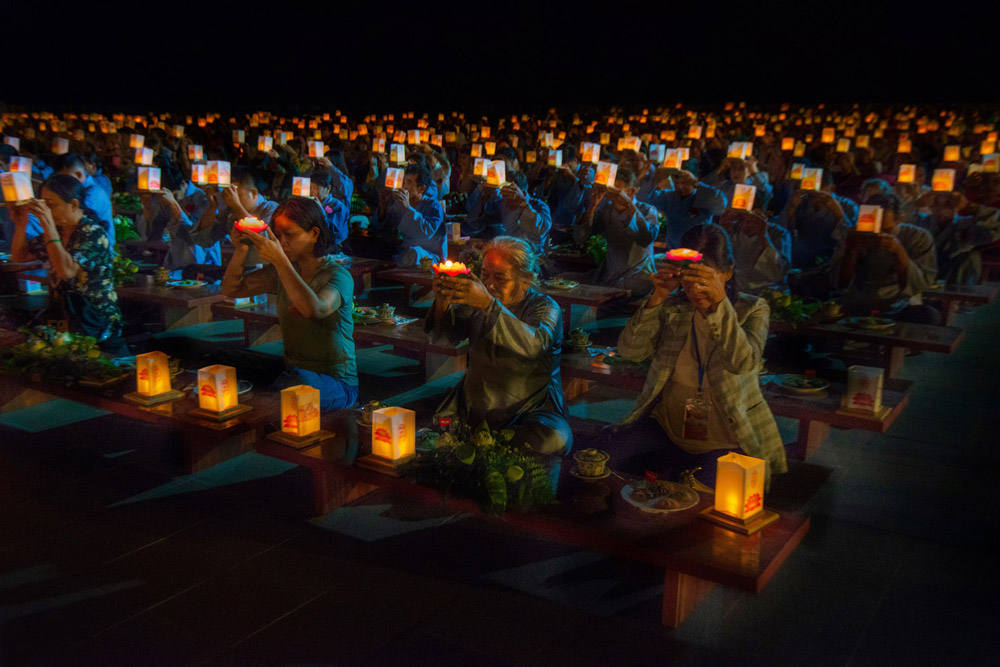
Vietnamese culture places a strong emphasis on modesty, and this extends to the way people dress, especially in more traditional and rural areas. While cities like Hanoi and Ho Chi Minh City have become more cosmopolitan with a mix of modern fashion, the cultural expectation of dressing modestly is still deeply respected. Wearing appropriate clothing shows an understanding of local customs and can help foster more positive interactions with the people you meet.
When visiting religious sites like temples and pagodas, it's important to cover your shoulders and knees to show respect. Loose, lightweight clothing that covers more skin is not only culturally sensitive but also a practical way to stay comfortable in the heat while protecting yourself from the sun. In rural areas, where traditional values remain strong, dressing conservatively is even more important to avoid drawing unwanted attention. Meanwhile, in urban centers, you can embrace a more relaxed style, but it’s always appreciated to lean toward modesty.
By dressing respectfully, you’ll feel more integrated into Vietnamese society and show that you're mindful of their traditions. A good rule of thumb is to pack clothes that are both comfortable and considerate, ensuring you strike a balance between style and cultural awareness.

When packing for Vietnam, it's essential to consider the country’s diverse climate, which can vary significantly depending on the region and time of year. Having a well-thought-out wardrobe will help you stay comfortable while respecting local customs. Whether you’re trekking through the misty mountains in the north, strolling through the bustling streets of Ho Chi Minh City, or relaxing on a beach in the south, being prepared with the right clothing is key.
Start with versatile essentials that can be easily layered. Lightweight, breathable fabrics such as cotton and linen are ideal for Vietnam’s tropical heat and humidity, especially in the southern and central regions. For the north, especially during the cooler months of autumn and winter, include a few warmer items like a light jacket, long sleeves, or a sweater that can be layered for comfort. Since the weather can change quickly, particularly in places like Hanoi or Sapa, it’s helpful to pack clothes that can adapt to fluctuating temperatures.
A must-have item is a good pair of comfortable shoes, whether you’re planning to explore the city streets or hike through lush landscapes. Flip-flops or sandals are handy for the beach or casual walks, while sturdy walking shoes or hiking boots are essential for more adventurous treks. Don’t forget a raincoat or compact umbrella, especially if you’re visiting during the rainy season from May to October.
Versatility is key, so choose pieces that work for different activities and environments. For example, loose pants or maxi skirts are both comfortable and culturally appropriate for visits to temples, while light scarves can double as sun protection or a cover-up in more conservative areas. With the right mix of practical and respectful clothing, you’ll be ready for whatever Vietnam’s diverse climate throws your way.
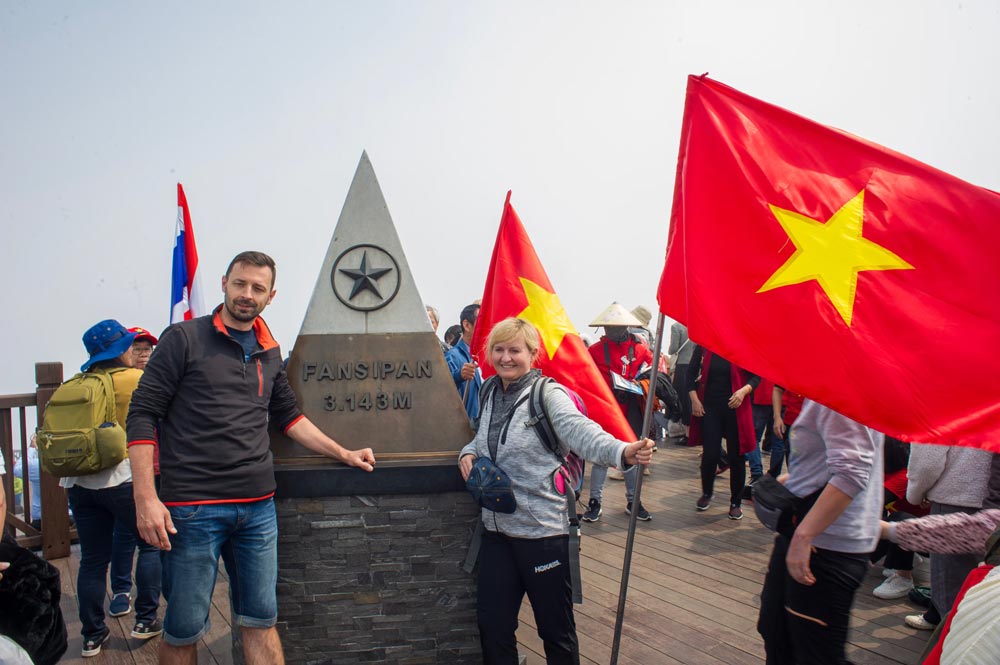
Northern Vietnam experiences distinct seasonal changes, so it's essential to pack accordingly. If you’re visiting in the winter months (November to February), expect much cooler temperatures, especially in mountainous areas like Sapa and Ha Giang. During this time, temperatures can drop significantly, and you'll need warmer clothing to stay comfortable. Think cozy sweaters, long-sleeved shirts, and a good-quality jacket to keep the chill at bay. It’s also a good idea to pack a scarf, gloves, and a hat if you're heading up to higher altitudes.
Layering is key when visiting Northern Vietnam, as temperatures can fluctuate throughout the day. Mornings and evenings tend to be cold, but afternoons can warm up slightly, especially in lower-altitude areas. Pack versatile pieces like thermal tops and fleece jackets that can be layered over lighter clothing. This way, you can easily adjust to changing weather conditions as you explore the beautiful landscapes.
If your trip involves hiking or trekking through the stunning northern mountains, make sure to bring comfortable, sturdy footwear. A good pair of hiking boots or shoes with strong grip is essential for navigating uneven terrain. Waterproof shoes can also come in handy, as mountain trails can get muddy or slippery, especially during the rainy season. With the right mix of layers and practical footwear, you'll be ready to fully enjoy Northern Vietnam’s rugged beauty, no matter the season.
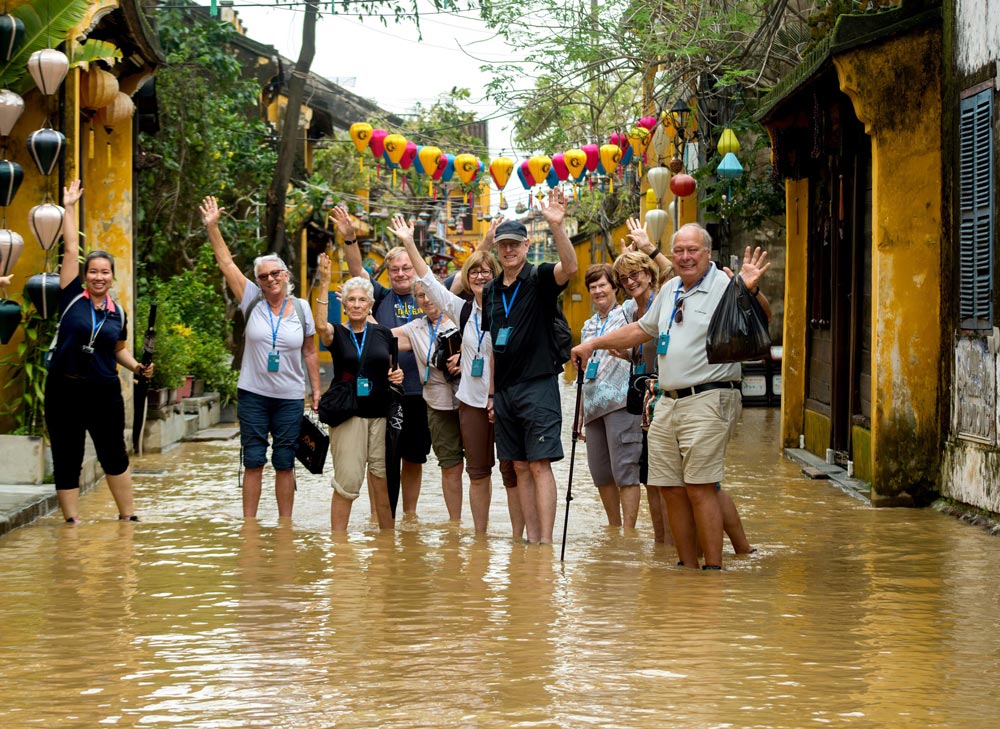
Central Vietnam is known for its tropical climate, which brings warm temperatures and high humidity throughout much of the year. To stay comfortable in this region, lightweight and breathable clothing is your best friend. Opt for fabrics like cotton, linen, or moisture-wicking materials that allow your skin to breathe and help keep you cool. Loose-fitting clothes are ideal for exploring cities like Danang or wandering through the historic streets of Hoi An, where the heat and humidity can be intense, especially during the summer months.
During the rainy season (September to December), it’s important to pack rain gear. Central Vietnam often experiences heavy rainfall and occasional typhoons, so a compact, waterproof raincoat or an umbrella should be a part of your packing list. Quick-dry clothing can also make a big difference when sudden showers hit, allowing you to stay comfortable even in wet conditions. Along with rain protection, don’t forget to pack sunscreen. The tropical sun can be strong, even on cloudy days, and sunscreen will help protect your skin as you explore this beautiful region.
By dressing in lightweight, breathable layers and being prepared for rain and sun, you'll be ready to enjoy everything Central Vietnam has to offer—whether you're relaxing on the beaches of Danang or exploring the ancient temples of Hue.
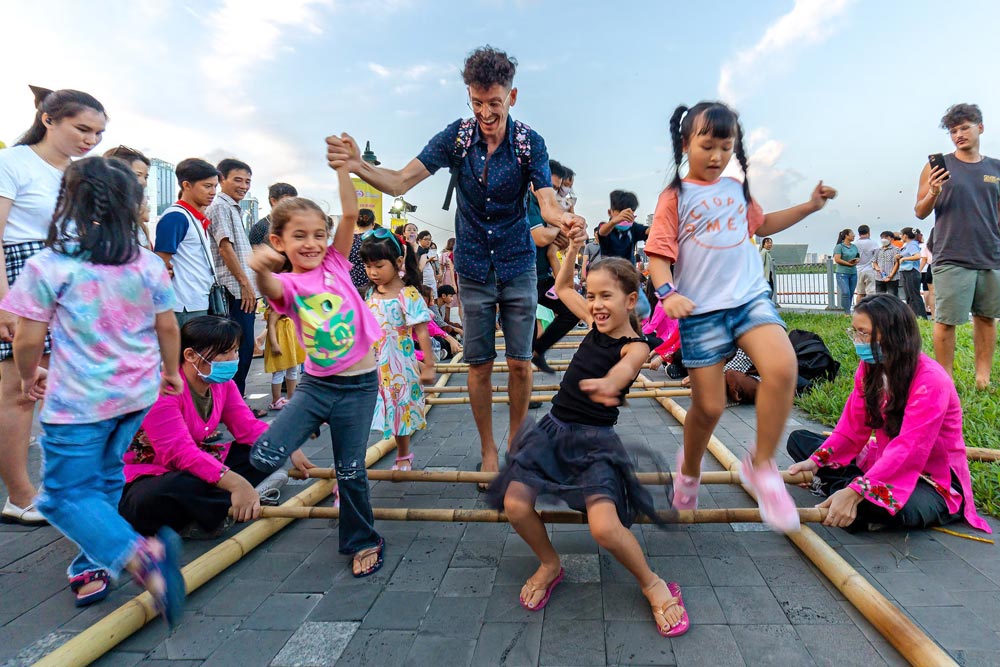
Southern Vietnam is known for its tropical climate, with hot and humid weather year-round. Whether you're visiting bustling Ho Chi Minh City or relaxing in the Mekong Delta, you'll want to dress for the heat. The temperature in this region can easily climb, and the humidity adds to the intensity, making loose-fitting, lightweight clothing a must. Breathable fabrics like cotton or linen are perfect for keeping cool as they allow air to circulate and prevent overheating.
Given the constant sunshine, sun protection is also essential. A wide-brimmed hat, sunglasses, and plenty of sunscreen will help protect your skin from the intense rays, especially if you’re spending a lot of time outdoors. For those venturing out on day trips or exploring the vibrant streets of Southern cities, light layers that you can easily remove or add depending on the setting will keep you comfortable. Staying cool and protected from the sun ensures that you'll fully enjoy your time in Southern Vietnam without the discomfort of heat or sunburn.
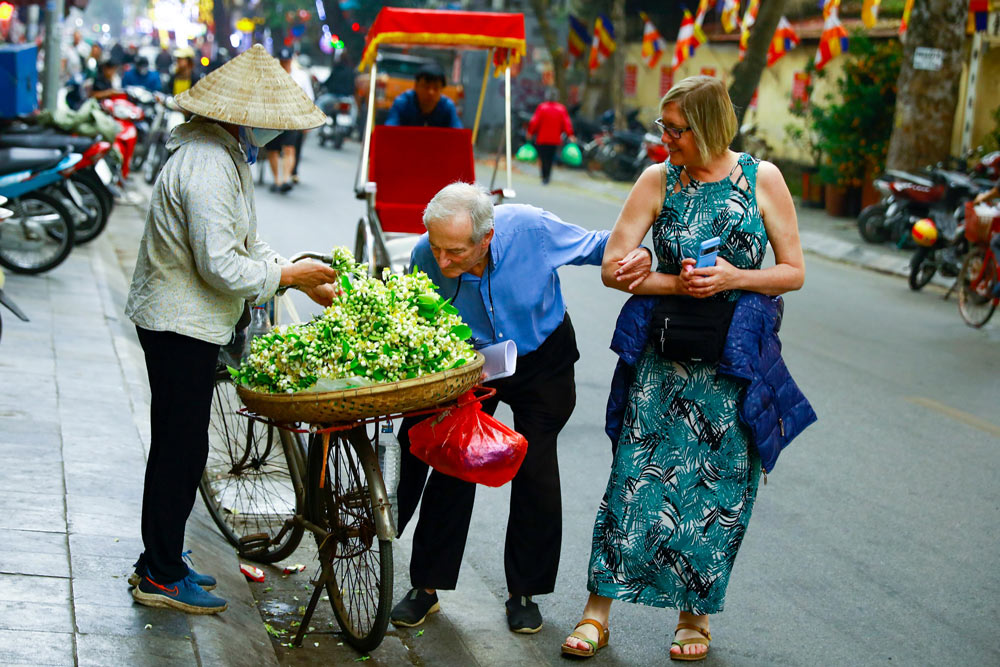
When it comes to what women should wear in Vietnam, cultural sensitivity plays a key role. While the country’s cities have a more relaxed dress code, especially in tourist-heavy areas, it’s still important to be mindful of local norms, particularly when visiting temples or rural areas. Skirts and dresses that fall below the knee are considered respectful, especially in religious or traditional settings, and covering your shoulders is a must when entering temples. A lightweight scarf can be a useful accessory, allowing you to cover your shoulders when needed while also adding a stylish touch to your outfit.
For casual outings, flowy dresses, loose-fitting pants, or maxi skirts are great choices that balance comfort and style. They’re breathable enough for Vietnam’s tropical climate but still modest enough to meet cultural expectations. If you're heading to more formal events or upscale dining experiences, opt for a smart, elegant dress that keeps you cool while ensuring you look polished. Pairing these pieces with comfortable shoes like flats or stylish sandals will help you navigate the busy streets and beautiful landscapes of Vietnam with ease.
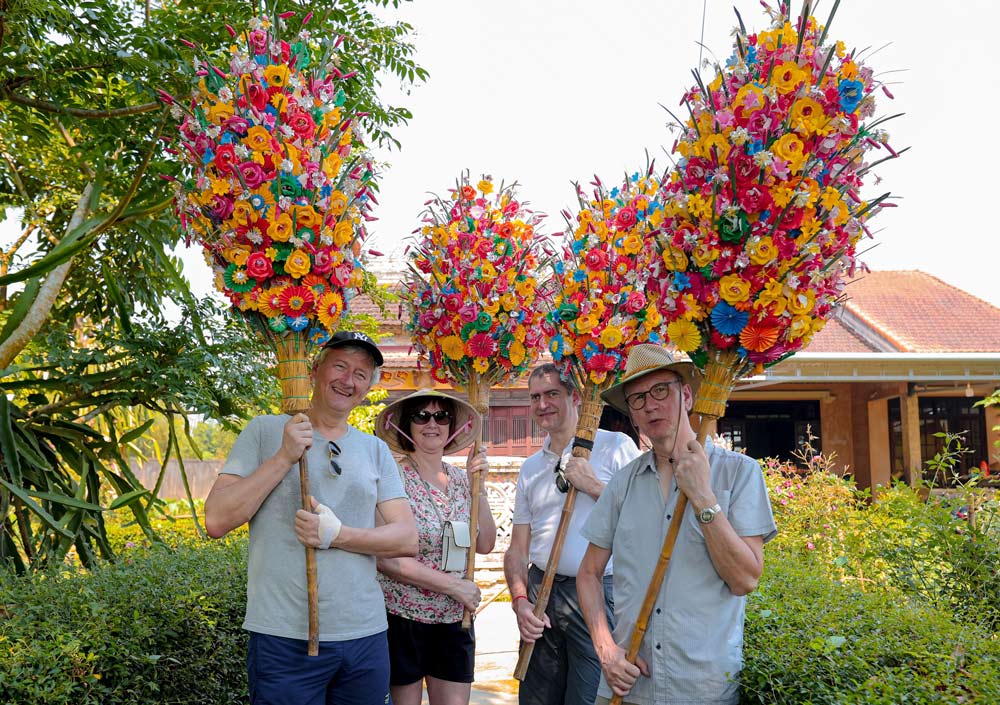
When it comes to what men should wear in Vietnam, the key is to stay cool and comfortable while respecting local customs. In the hot, tropical climate, lightweight and breathable clothing is essential. Opt for cotton or linen shirts, which allow your skin to breathe in the humidity. Pair these with comfortable shorts or lightweight trousers, especially if you plan to spend a lot of time outdoors exploring cities, beaches, or hiking trails. Avoid heavy fabrics, as they can quickly become uncomfortable in the heat.
For more formal events or cultural experiences, such as visiting temples or attending special gatherings, it’s best to choose a collared shirt and long pants. While the atmosphere is often relaxed in tourist areas, formal occasions still require a certain level of respect in dress. A pair of smart trousers and a button-down shirt will keep you looking presentable while also adhering to local expectations. For those heading to upscale restaurants or formal events, you may want to pack a light blazer or a nice polo shirt to elevate your look while still staying comfortable in Vietnam’s warm climate.
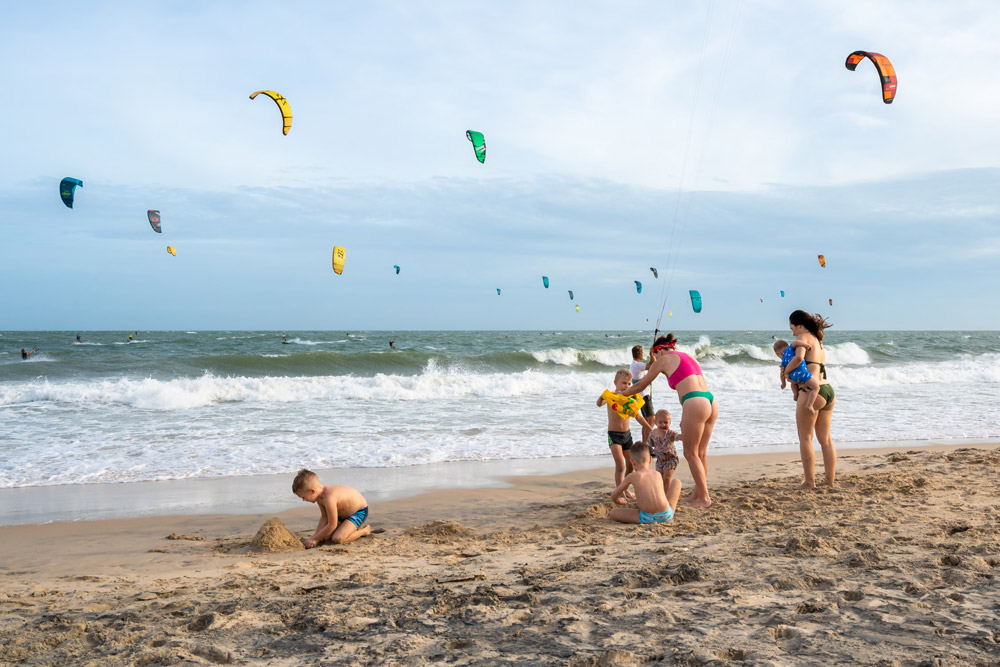
When visiting Vietnam’s beautiful beaches and coastal resorts, swimwear is, of course, appropriate in designated areas. Whether you’re lounging by the pool at a luxury resort or swimming in the clear waters of places like Phu Quoc or Nha Trang, bikinis, swimsuits, and trunks are perfectly suitable. However, it’s important to be mindful of where you’re wearing them. In Vietnam, swimwear is generally reserved for the beach or pool areas, and it’s best to cover up when walking through public spaces like streets or local markets, even if you’re just coming from the beach.
Bringing along a sarong, beach cover-up, or lightweight shirt is always a good idea for when you need to step away from the sand. While casual and relaxed clothing is accepted in tourist-heavy zones, dressing modestly when you’re outside designated beach areas shows respect for local customs and helps you blend in more comfortably. This small effort ensures you enjoy your time at Vietnam’s stunning beaches without any unintentional cultural missteps.

When deciding what footwear to bring for your trip to Vietnam, comfort and versatility should be your top priorities. Whether you plan to stroll through bustling city streets, explore ancient temples, or hike in the mountains, your shoes need to support you through a variety of activities. For walking around cities like Hanoi or Ho Chi Minh City, lightweight sneakers or breathable walking shoes are ideal. They’ll keep your feet comfortable during long days of sightseeing while offering enough support for uneven pavements or cobblestone streets.
If your itinerary includes more outdoor adventures—like trekking in Sapa or hiking through national parks—consider packing sturdy hiking boots or trail shoes that can handle rugged terrain and offer good grip. Vietnam's tropical climate also means sudden rain showers are common, especially in central and southern regions, so it’s worth considering footwear that dries quickly or is water-resistant. For casual outings or visits to the beach, a comfortable pair of sandals or flip-flops will come in handy, but be sure they’re easy to walk in for long periods if needed.
Ultimately, the best footwear for your trip to Vietnam should balance comfort with practicality, helping you stay prepared no matter what your travel plans hold.
When planning your trip to Vietnam, dressing appropriately is key to ensuring both comfort and respect for the local culture. Whether you're exploring the cool mountains of the north, the tropical beaches of the south, or the bustling cities in between, packing the right clothing will enhance your travel experience. From lightweight layers to breathable fabrics and modest outfits for cultural sites, knowing what to wear will help you fully enjoy all that Vietnam has to offer.
For a truly unforgettable adventure, why not let Asia Mystika handle the details? With our Vietnam tour packages, we offer tailor-made experiences guided by local experts who understand the region inside out. You can trust us to provide a safe, authentic journey that balances value for money with personalized touches. Ready to experience Vietnam like never before? Let Asia Mystika be your guide to this incredible destination!